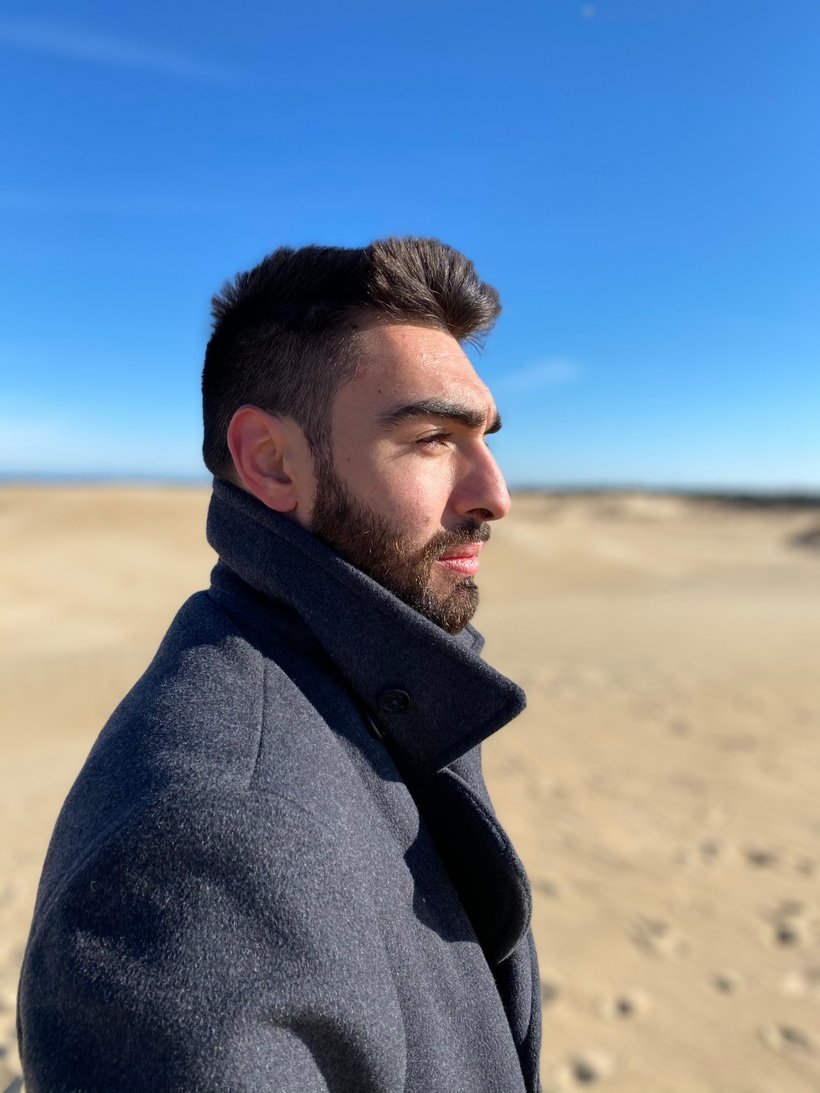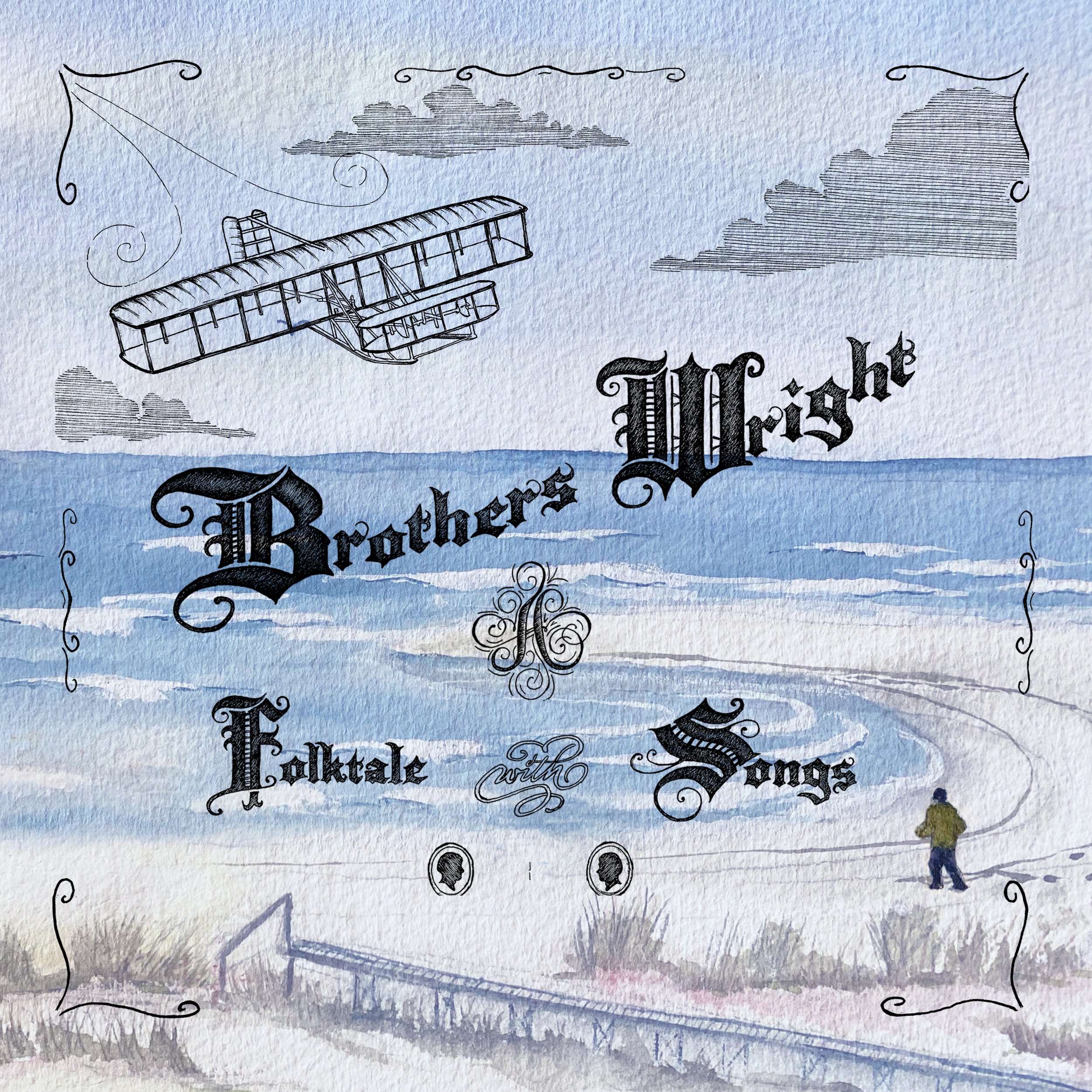Ghosts Whose Names You Know: Kitty Hawk, N.C. - Colby J. Herchel
I wish being a writer were as romantic as I think it is. It’s usually divided as follows: a hot iron into cool water that is the inspiration, roughly one percent of the experience— The other ninety-nine is, yeehaw, hard work. To that end, I do at least make sure whatever I work on has that gut moment of inspiration, the pieces falling into place so you well up like you could cry. I mean if an idea doesn’t do that, is the hard work really worth it?
So it is hard work, and unless you are careful the work can be so very hard that you lose that sharp shock of inspiration. Then you’re swimming in scenes and songs that might have meant something once but are now a nice example of the fact that you can do hard work. You understand why it’s important, then, to have a catch-all of that inspiration that you might be able to go back to. An image, an object, a piece of music that can send you into that dreamspace once more.
Brothers Wright (subject, verb) has been haunting me for years since I challenged myself to read a Wright Brothers biography on a road trip and not conceive it as a musical. Yes obviously I did, but I didn’t know quite how. Honestly, they’re pretty amiable as far as innovators go. No bitter rivalries, no girl trouble. Just chill brothers who were awfully motivated. Was it the family angle, was it the sister, Katherine? Or even a technical analysis, what the journey of figuring out heavier-than-air-flight might actually be… physically? About a year later when I was jogging I stopped and wept because I remembered that they had achieved flight among a group of people who had never experienced significance in any way.
That was the Hoi-toiders, the Men-folk, and Fisher-folk of the Outer Banks. Rough for lack of access, faithful for lack of challenge, and terribly lonely. These characters could not be the center of this musical, for they weren’t, but they would be the backdrop, and the philosophers. The Rolf and Liesl to the Captain and Maria. And with this realization, Brothers Wright became a story about faith.
Sentimental? Yes. After working on this show for years, staging it with Madelyn Wiley for the New York Theater Festival in 2019, and producing a cast album with Kelly Oostman, my little compass of inspiration has been pointing to darker waters, namely a sojourn to post-colonialism with A Trip to the Moon and death and decay with the ever-upcoming Rocking Chair. So when Scantic River Productions took up the challenge of bringing an updated Brothers Wright outdoors this summer, I was a little… tentative about returning to Kitty Hawk. Frankly, who in this faithless age needs a faith story, and a pensive one at that?
I decided to pretend I was a writer and isolate myself to tackle the edits, taking the initiative to finally visit a friend of mine in Portsmouth, Virginia which was conveniently an hour’s ride from Kitty Hawk. I did this for a change of scenery (Pandemic-Era New York City is a stubborn and claustrophobic challenge, but I won’t give up) for the most part. I didn’t anticipate any change of heart to come from visiting some field trip destination, but I figured at least I would commit. And my greatest advice to any clotted writer is deadlines, especially the ones where you’re expected to have something to actually perform.
Hi-ho, hi-ho, my friend and I drove down and pulled over at gas stations that sold twelve-layer cakes and diners that were on stilts. As the land flattened and the sky opened up, you could understand a little more the poetry the Wright Brothers must have found in it— there is so much of it outside New York, after all. I screamed in my friend’s ear about great, smelly estuaries we passed, and she showed me Canadian bluegrass music.
The road gently J’d into a long, wide bridge— the Wright Memorial Bridge, in fact— which was an unassuming, concrete Jenga block connecting the Inner and Outer Banks of North Carolina. It seems a perfect bridge for them; functional, important, and straightforward. I regaled my friend about how awful it was to get to Kitty Hawk in the year 1900, and how Wilbur Wright himself spent a stormy night at sea to first arrive. I haven’t looked it up but I hope that Orville at least learned they were going to make a bridge named after them so people like me could go without getting mommucked ourselves (a Hoi-Toider term that means fucked, but nautically). Oops, it was already working.
Yes the museum was terrible, riddled with takeaway quotes that live in the margins of public school textbooks, and ways to relate the Wright Brothers story back to you. It was also particularly awkward because Wright™ memorabilia belongs in three locations: Dayton, Ohio, the Air and Space Museum in Washington, D.C, and here at the Wright Brothers National Monument. There’s a catty feud between Ohio and North Carolina as to who owns flight, so D.C. had to step in and take the original Flyer and the warring states were left with replicas. But lucky me, the dregs of the exhibit were what I really cared about.
I felt very strange when I saw Addie Tate’s sewing machine on display— Sure, the Smithsonian has the Flyer, but not the machine that made it. I had no clue this would be here, but I had written about this very sewing machine for years, not knowing anyone knew to keep something like that. Since I try to approach historical characters as characters before people, sometimes you forget that they were real people in the first place. It was like my character actually came to life in that moment (Oy). And here was a toy on display, a replica of what Wilbur would bring to school every day, which was what I’m told is a “hand-copter:” a stick with a wooden oak seed on top that when you spin it, it hovers up aloft. I immediately bought one from the gift shop. It felt like a missing piece that I had been trying to answer with other incorrect props (also in this gift shop [I am very good at navigating gift shops having been the floor manager of one] was a book of Outer Banks folktales that might be one of my favorite books ever no joke).
Then there was the ground itself. It was marked by great granite stones as is contagious at these kinds of places, stretching from the liftoff to the first, second, then third flights. Nearby were replicas of their hanger and workshop. It was a surreal sense of hereness, this hallowed ground that was filled with ghosts I knew intimately, at least my own idea of them, and I felt the chill of their lives and deaths in polyphony. I remarked that in the famous photo, it was not a grassy field as it is now, but a long stretch of sand (it still is over at Jockey’s Ridge three miles South, which my friend and I visited as well— the best kite flying you might ever experience. My new hand-copter surely flew twenty feet away). It turns out the grass was planted to preserve the landscape, as the dunes would have shifted and the point of first flight would have been lost. I find it fitting a barren land has been affixed with so many individual leaves of grass, myriads swaying in that same first breeze.



